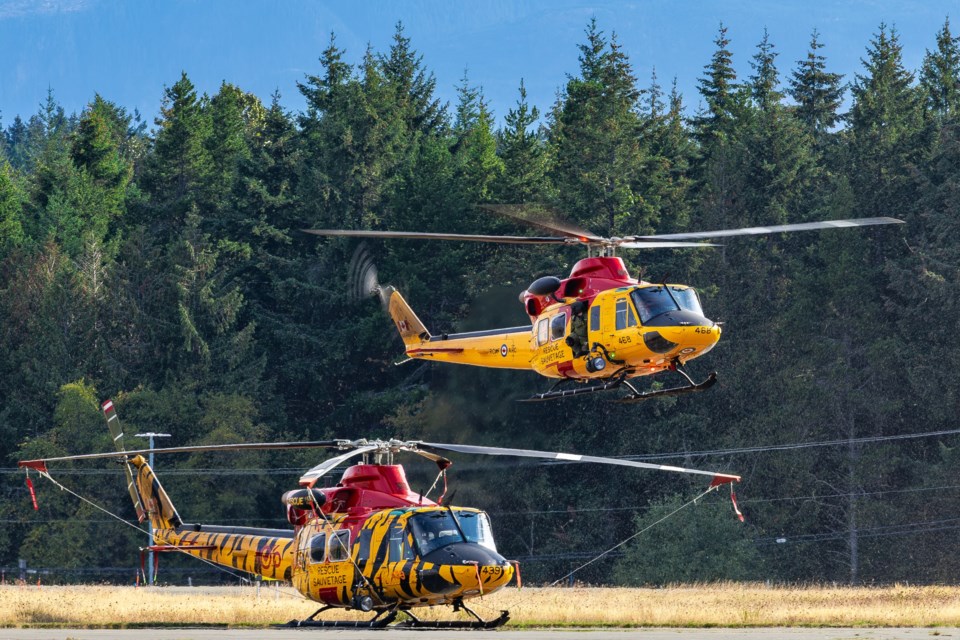Residents on the northern Sunshine Coast may get a glimpse this week of one of the largest Canadian search and rescue exercises (SAREX) at 19 Wing Comox in nine years.
Many from the qathet region, especially in the Westview neighbourhood, are most likely familiar with seeing bright yellow Cormorant search and rescue helicopters, usually conducting simulated rescue operations. qathet residents may be seeing/hearing a different helicopter this week, called a Ch-146 Griffon, and other Royal Canadian Air Force (RCA) aircraft in the skies over the next few days.
What began on September 9 will continue until the big finale on September 13, with more than 60 simulated search and rescue scenarios conducted by 110 Canadian Armed Forces members and approximately 70 personnel from the United States Coast Guard, US Navy and US Air Force, according to a media release from the Department of National Defence/Royal Canadian Air Force.
The Peak spoke with the director of the 2024 SAREX for the Royal Canadian Air Force, lieutenant commander Wes Jones, about the events at 19 Wing Comox.
"[SAREX] is for every search and rescue squadron in Canada to send one aircraft and crew to spend a full week devoted entirely to search and rescue training," said Jones. "That gives opportunities for our search and rescue crews, who are on call 24 hours a day, 365 days a year, to just focus on their craft, get better at their mission and learn from their partners and peers at other units."
Jones said they also have search and rescue units from California, Oregon and Alaska.
"What my team and I have done for the last 12 months is set up various search and rescue scenarios throughout the coastal BC area," said Jones. "This includes an area about 25 miles [40 kilometres] north of Powell River."
A USCG Kodiak and USCG Sacramento white and orange aircraft could be seen heading to the vicinity of Mount Alfred, at the head of Jervis Inlet, as part of the event this week.
Jones said right now there are 16 aircraft and 225 crew from both nations being assigned daily missions. They could be anything from a simulated helicopter crash or an overdue plane, to a lost hunter or hiker in the mountains, or a boat that is sinking.
"We have 16 scenarios set up, and each one's kind of challenging in its own way," said Jones. "On board every aircraft, one of my team members is there to evaluate the scenario and also provide input and learning points."
2015 was the last SAREX exercise event, but historically, they happened annually, said Jones.
"We're entrusted with giving [British Columbians] a search and rescue platform to save the people's lives," said Jones. "My team wanted to make it the biggest [SAREX event] ever and to really maximize the training value all these crews are going to get."
Jones said the United States Navy from Washington State is also at 19 Wing Comox participating in the event.
"I'm actually an American exchange pilot here within Comox," said Jones. "I've been here as an American, attached to the squadron of Comox, for two years as a search and rescue Cormorant helicopter pilot."
Jones said residents may hear a helicopter fly over qathet this week, in some quick overflight scenarios, but nothing too disruptive.
Join the Peak’s email list for the top headlines right in your inbox Monday to Friday.



